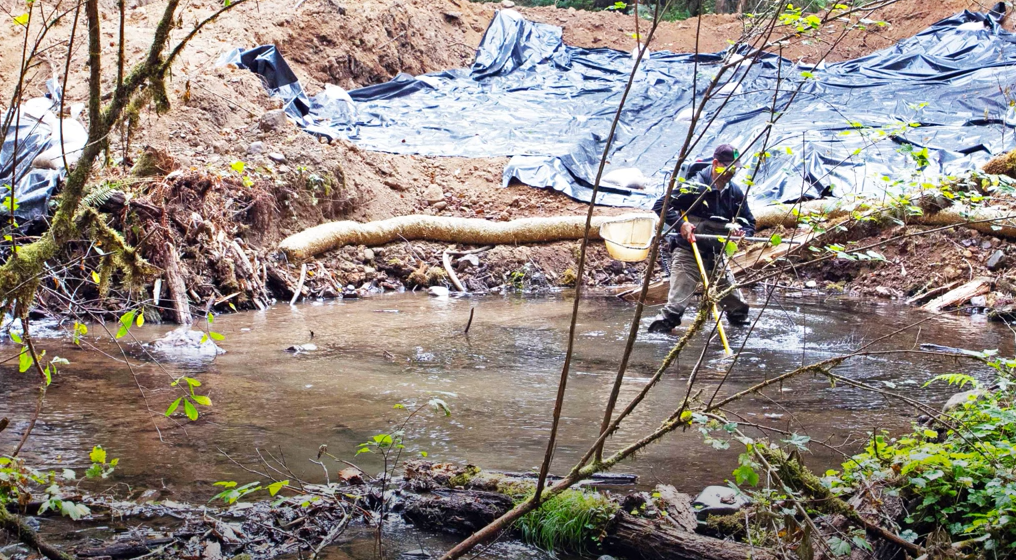
We are excited to share the success of a recent volunteer fish habitat restoration project! A 50-year old culvert, and complete barrier to fish passage on Little Eagle Creek, has been replaced with a new fish-friendly culvert satisfying the provisions of Oregon’s new Private Forest Accord.
This project replaced a round 6′ diameter culvert on Little Eagle Creek (a tributary of the North Fork Eagle Creek) with a much larger pipe arch culvert. This project took place on private forest property in Estacada, OR.
Spearheaded by CRBC Board Member Dave Bugni, the project wrapped up construction in 2022. This culvert replacement opened up about 4 miles of previously inaccessible stream habitat to anadromous fish including coho and winter steelhead.

About Little Eagle Creek
Little Eagle Creek is a medium sized salmon and steelhead stream which historically was a good producer of coho and winter steelhead. It is the third largest tributary in the North Fork Eagle Creek behind Bear and Suter Creeks.
Pictured right is the original culvert, which was a complete obstruction to fish passage.
Pipe arch culvert construction
Three options were considered before replacement of the culvert took place; pipe and culvert, open arch culvert and precast concrete bridge. Cost, procurement and construction schedules for the options revealed that the pipe arch was the best solution.

Before and during construction, fish biologists from the Oregon Department of Fish and Wildlife periodically electroshocked fish below and above the construction site. The fish that were recovered were moved to a new location.
The new pipe arch culvert width is much wider than the original culvert. The new culvert needed to satisfy the requirements of Oregon’s new Private Forest Accord which requires that it pass a 100 year flood and be a minimum width of 1.2 x the active channel width plus 2′. This translated to a 17′ wide culvert.
The culvert was delivered in over 40 pieces and engineers and contractors worked to assemble the culvert in accordance with a specific sequence.
If interested, check out this short, eight-minute video, complete with a time lapse of the construction process:
Photos of construction:






